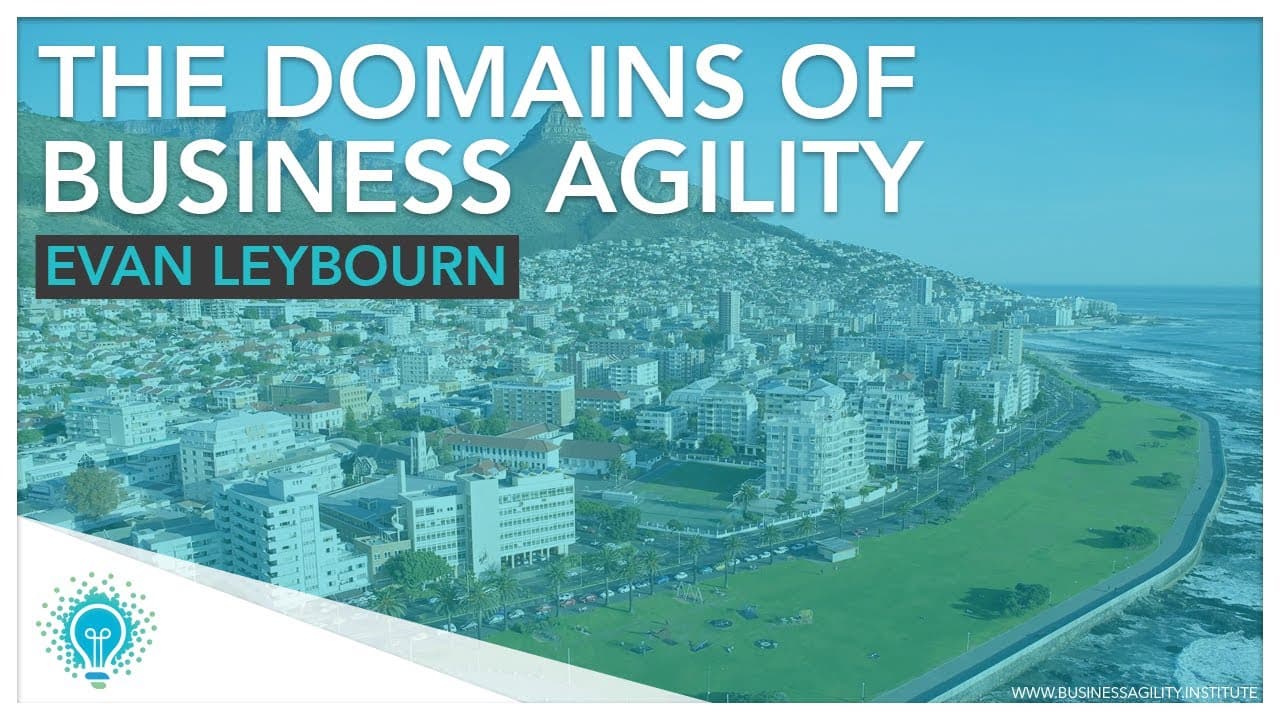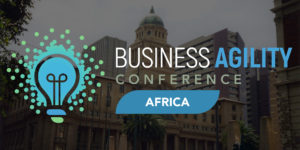All right. Oh, that's very loud! Good morning, everybody—or g'day! To be fair, we don’t really say "g’day"; this is what we say to Americans. But I'd like to welcome you all and thank you very much for joining us.
Yes, this is the inaugural Business Agility Conference here on the African continent. This has been a long time in the making. We've been talking with Miles, Dillon, and others about what it would take to translate these concepts and ideas to the specific challenges and contexts of your organizations on this continent. I can’t just take what works in America and apply it here. It has to be local. It has to be real for you, your organizations, and the culture in which you exist. However, there are certain similarities across all countries and regions.
First, bring out your phones. I want to ask you a question. Business agility, at its heart, is very much about leadership—whether in relation to customers, employees, or the organization itself. It is the leaders who need to change to create the mindset and approach necessary for agility. So, I want to know: what kind of leader do you want to be? Why are you here?
Let’s keep this up for a minute. And keep your phones ready because we’ll do this again at the end. Hopefully, the technology is working... There we go!
Authentic. Fantastic! Who else? Adaptable. Beautiful. Inspirational—that is a powerful word. The idea of an inspiring leader is, in many ways, the key distinction between a traditional manager and an agile leader. An agile leader inspires the organization to follow them. Inspirational, empowering—yes! Transparent, compassionate, brave—absolutely.
I used to be a public servant in the Australian government. When we called someone "courageous," it was an insult. It meant they were about to be fired! Sadly, this is true in many organizations. But bravery is needed. Humble, disruptive, transformative, forward-thinking—human. Yes, human! I love that. This is fantastic. You get it. Everyone in this room gets it. We’ll come back to some of these.
Why Do We Need Business Agility?
Let’s talk about the country you’re in right now and the world you’re operating in. Why do we want business agility? What I’m about to say is American-centric, but it is just as true here.
Since 1983, 57% of Fortune 100 companies—the biggest companies in America—no longer exist. Over the past 30-40 years, these companies have gone bankrupt, been acquired, merged, divested, or shrunk to a fraction of what they were. Some have risen again, but most have failed. Market failure is the future; it is what we need to expect.
However, I don’t want to focus on the bad side of business. Yes, we live in a VUCA (Volatile, Uncertain, Complex, Ambiguous) world. Yes, disruption is everywhere. But business agility is not just about surviving. Surviving is only the first step.
Business agility is about thriving. It is about taking a disruptive market and becoming the disruptor. It is about being at the forefront, taking ambiguity and uncertainty, and using them to your competitive advantage and your customers’ benefit.
The Business Agility Journey
I was going to talk about the benefits of business agility, but let’s skip ahead. The Business Agility Institute is a global research organization. We publish research papers every one or two months, and the Business Agility Report is one of our flagship publications. If you haven’t read it, please do.
The benefits of business agility go beyond mere survival. But the journey you are on is long and hard. Quick question: how long do you think it takes for a business agility transformation to be sustainable? Call out a number.
Three years? Ten years? Yes, it’s closer to ten. It takes approximately eight years for a business agility transformation to be sustainable. You will see benefits well before that—within about the first six months. But if you take your foot off the accelerator, things slow down. All it takes is one Netflix or Uber to put you out of business.
What is Business Agility?
Let’s take five minutes to go through the characteristics of an agile organization. This model, which we put together, is not a framework. It doesn’t tell you what to do but rather what not to forget as you transform.
At the heart of business agility is the customer. This may be controversial, but you are not in business to make money. You need money to stay in business, but that is not your purpose. You are in business to serve your customer.
Frederic Laloux said, "Profit is like the air. We do not live to breathe, but we do need to breathe in order to live." If you are not customer-centric—no, if you are not customer-obsessed—your customers will go elsewhere. They have more choices today than ever before. Whether you are a bank, insurance company, tech firm, or healthcare provider, customer obsession is the key.
The Importance of Leadership
Your workforce creates value. If your HR policies and practices are not adaptable, agile, and human, they will be a constraint. Your organization is only as agile as its least agile part. In the past, IT was the constraint. Then operations. Today, it’s the rest of the business.
Your board is often overlooked, yet it represents the owners of the company. I have seen more transformations fail due to board-level decisions than anything else. Vistaprint in the U.S. is a recent example—one board decision, and the whole transformation fell apart.
The Challenge of Transformation
One of the biggest barriers to structural agility is culture. Every five years, organizations restructure—optimizing for one thing but sub-optimizing something else. A mature agile organization doesn’t require transformation; it enables structural change implicitly.
Let’s talk about funding. Most companies still fund projects rather than stable teams. But transformation is not just about structure—it’s about mindset. The most effective way to shift management attention is through KPIs. What gets measured matters.
For example, I worked with a sales team where we changed their KPIs from "how many widgets did you sell?" to "how are your customers performing?" Salespeople began asking customers about their goals and needs. Almost overnight, they started selling more—not by pushing products but by solving real problems.
Final Thoughts
So, before I get booted off the stage, let me welcome you again and say thank you. Thank you for taking time out of your busy week to join this community and explore what it means to be an agile organization.
Over the next two days, you will hear from some of the brightest minds across Africa and around the world. The journey is long. The journey is hard. But the journey is necessary. Your competitors are adapting. Your customers are evolving. If you do nothing, you will fall behind.
The journey ahead of you is not just an organizational journey—it is a personal journey as a leader. Thank you very much.



 The world is changing more rapidly than ever before and organisations of every size are struggling to remain relevant in the eyes of their customers. The simple fact that the average lifespan of a company has decreased by more than 50 years in the last century demonstrates that not all organisations are prepared for this new reality. It is only high-performing, adaptable and agile organisations that will leverage, lead and thrive in this ambiguous and unpredictable market. We call this business agility.
The world is changing more rapidly than ever before and organisations of every size are struggling to remain relevant in the eyes of their customers. The simple fact that the average lifespan of a company has decreased by more than 50 years in the last century demonstrates that not all organisations are prepared for this new reality. It is only high-performing, adaptable and agile organisations that will leverage, lead and thrive in this ambiguous and unpredictable market. We call this business agility.